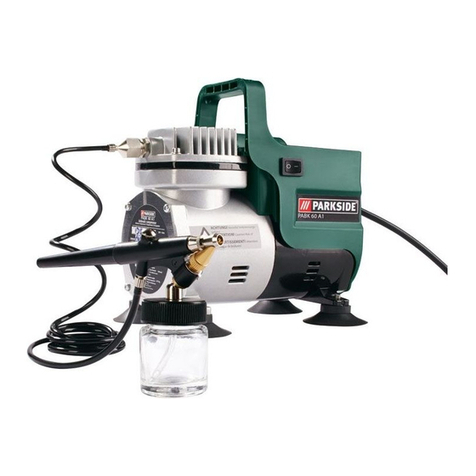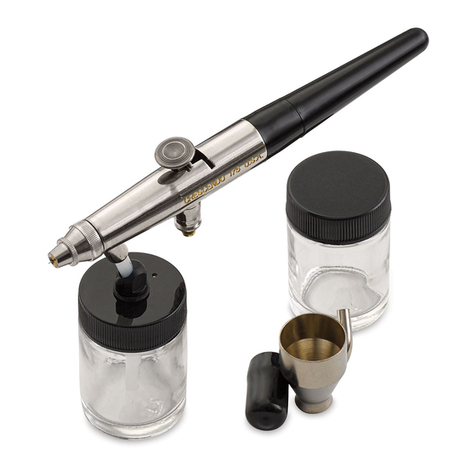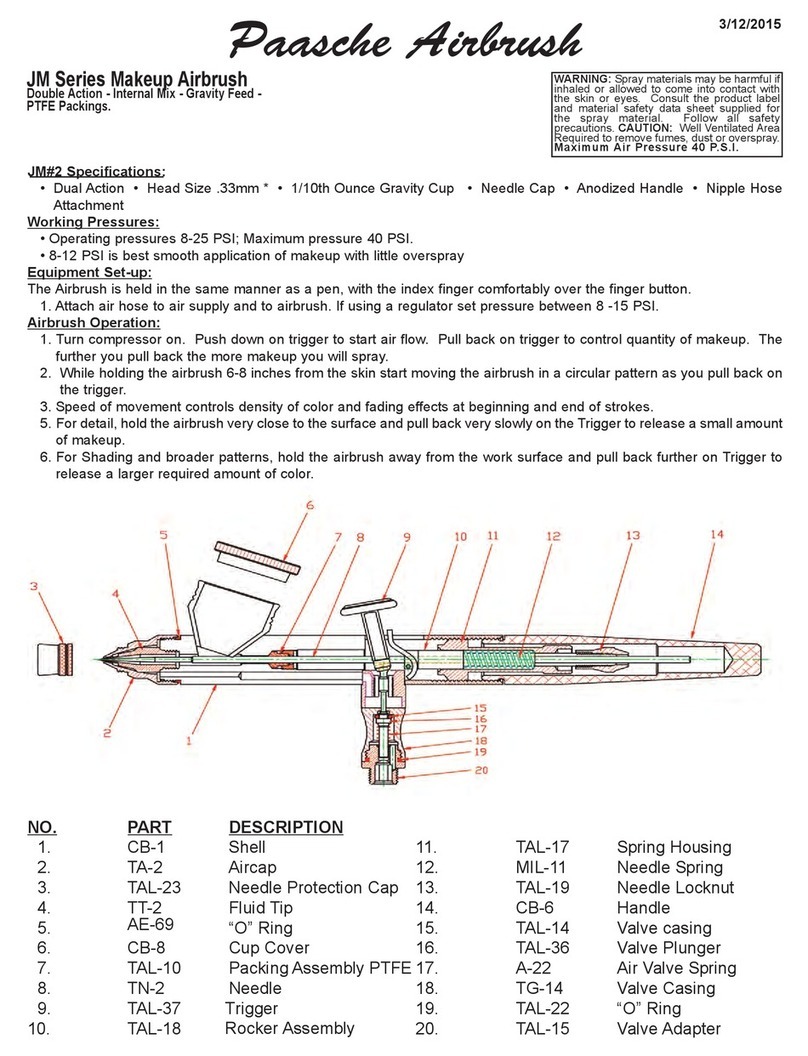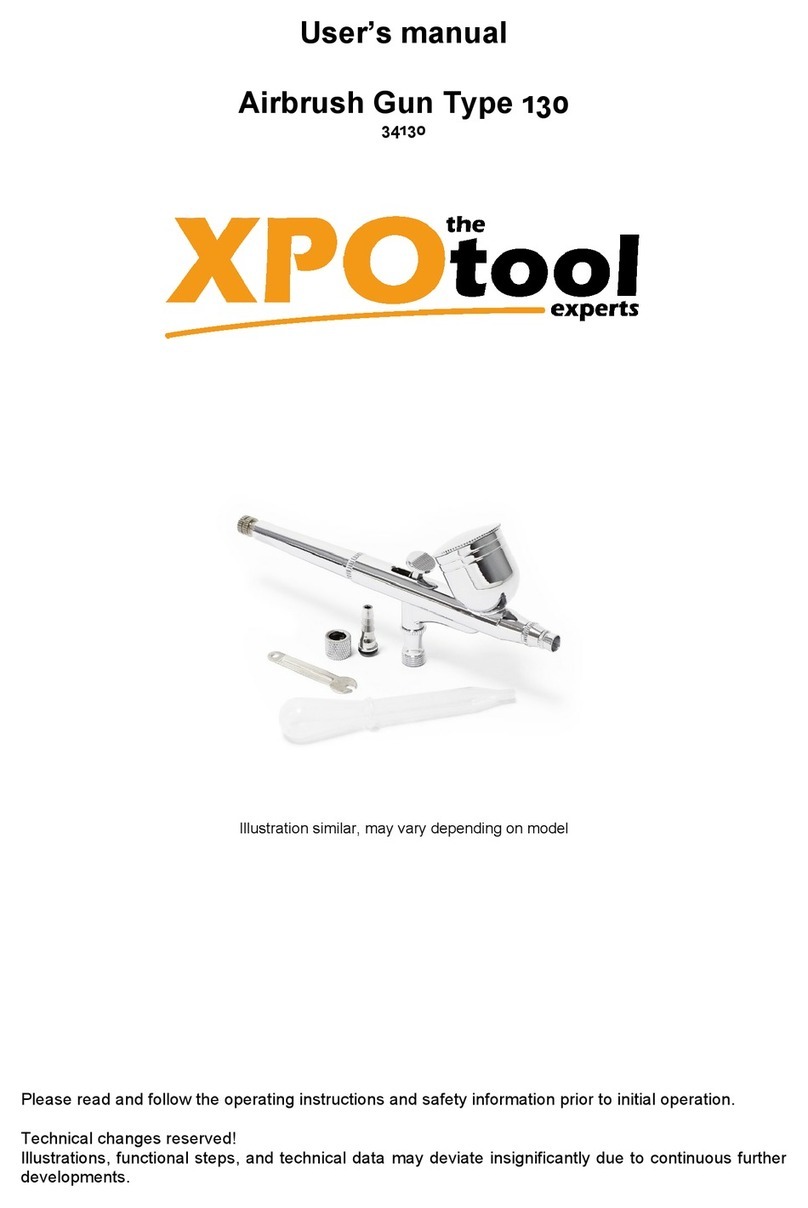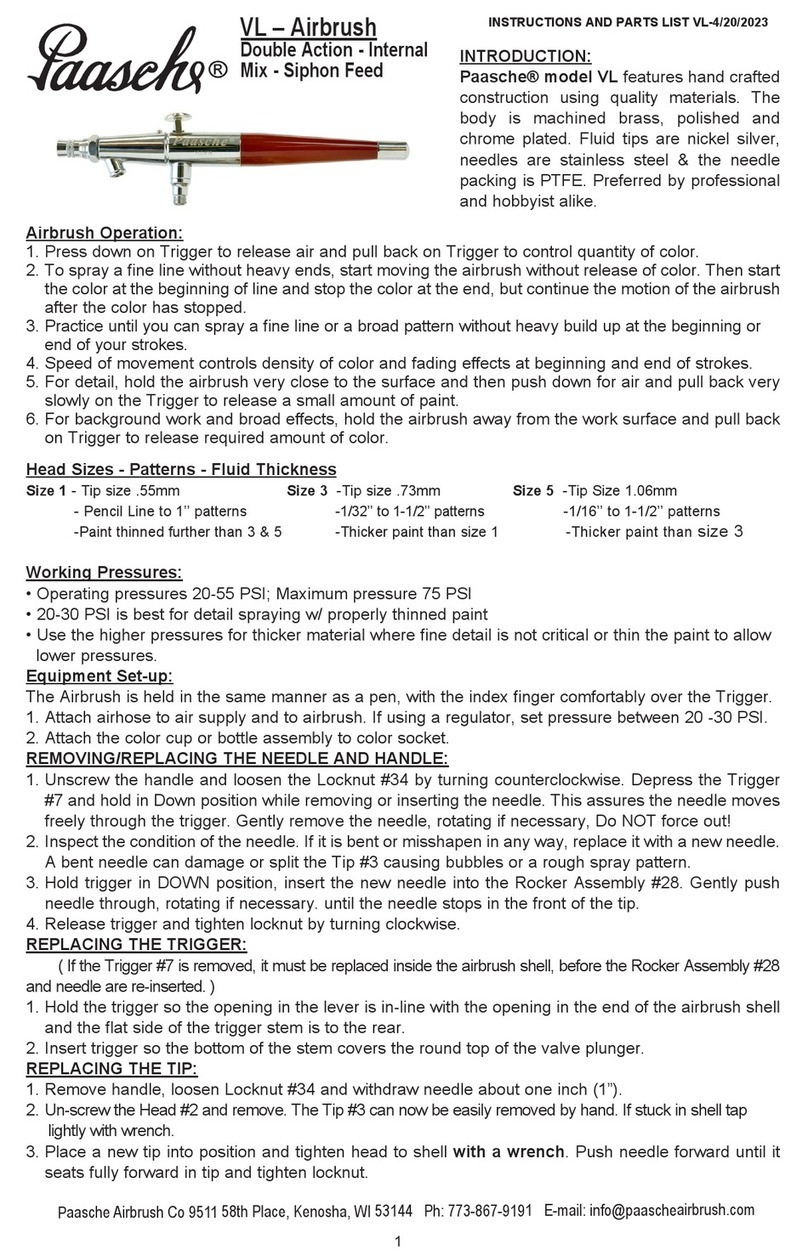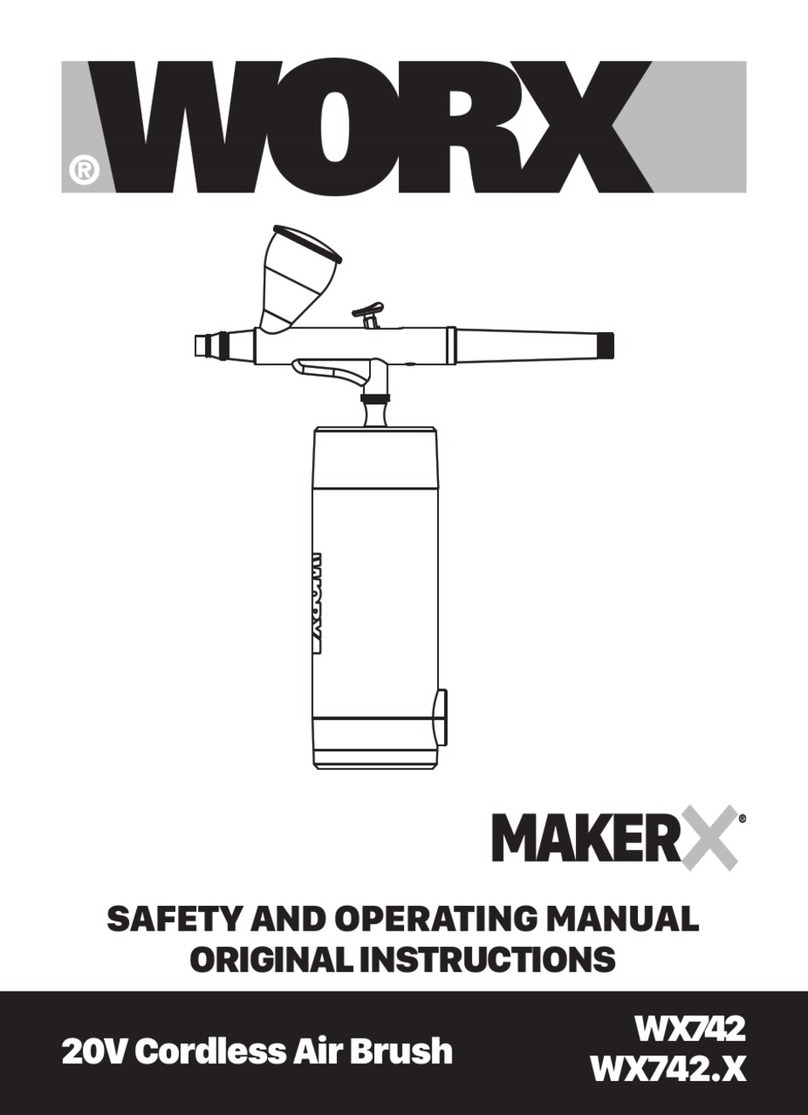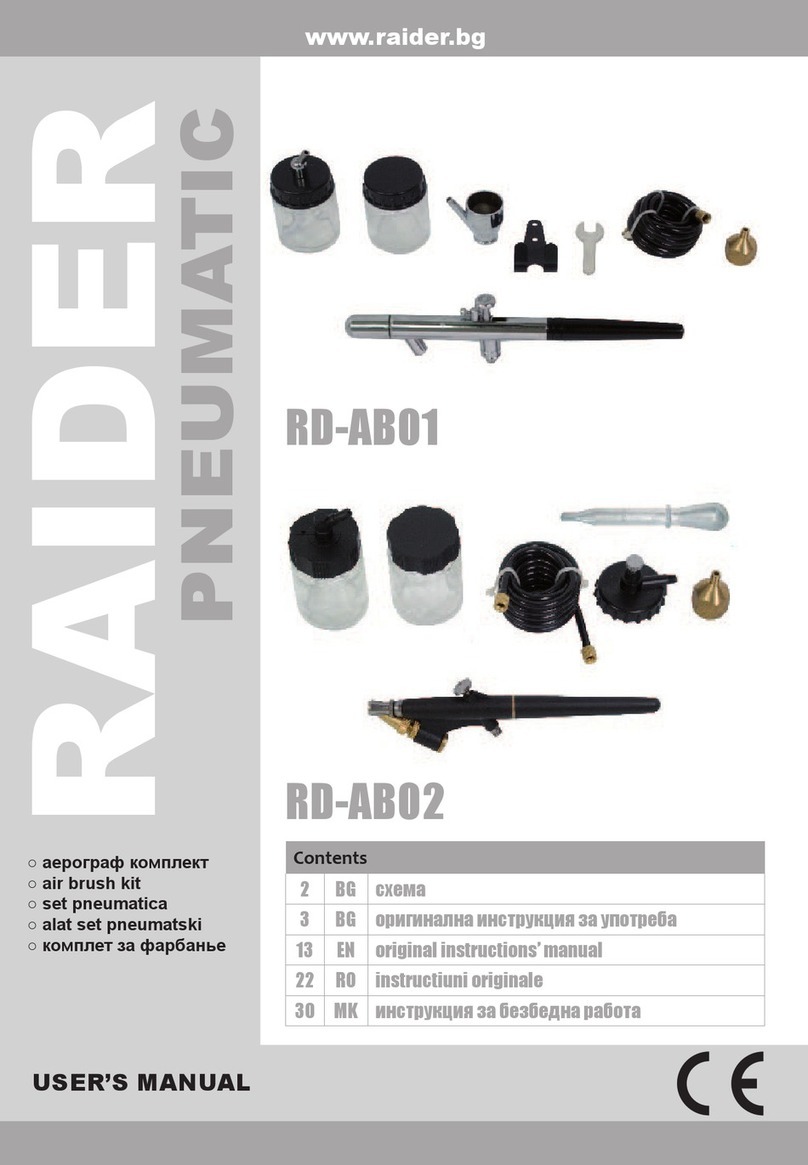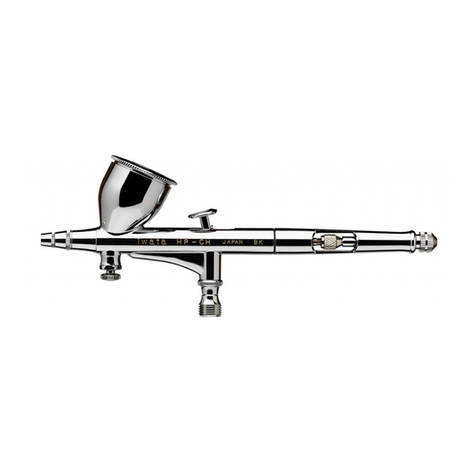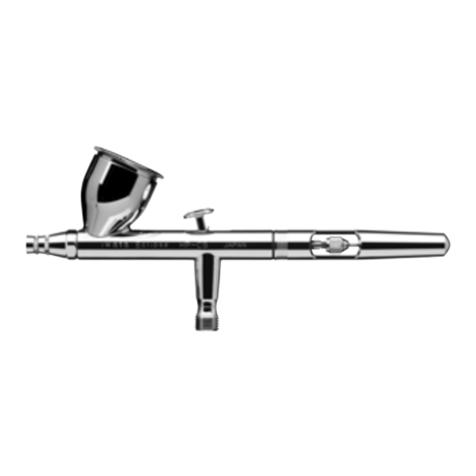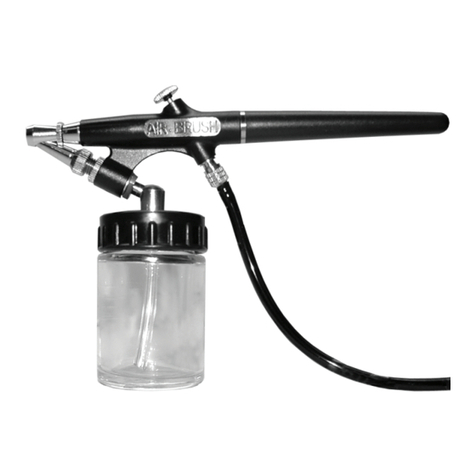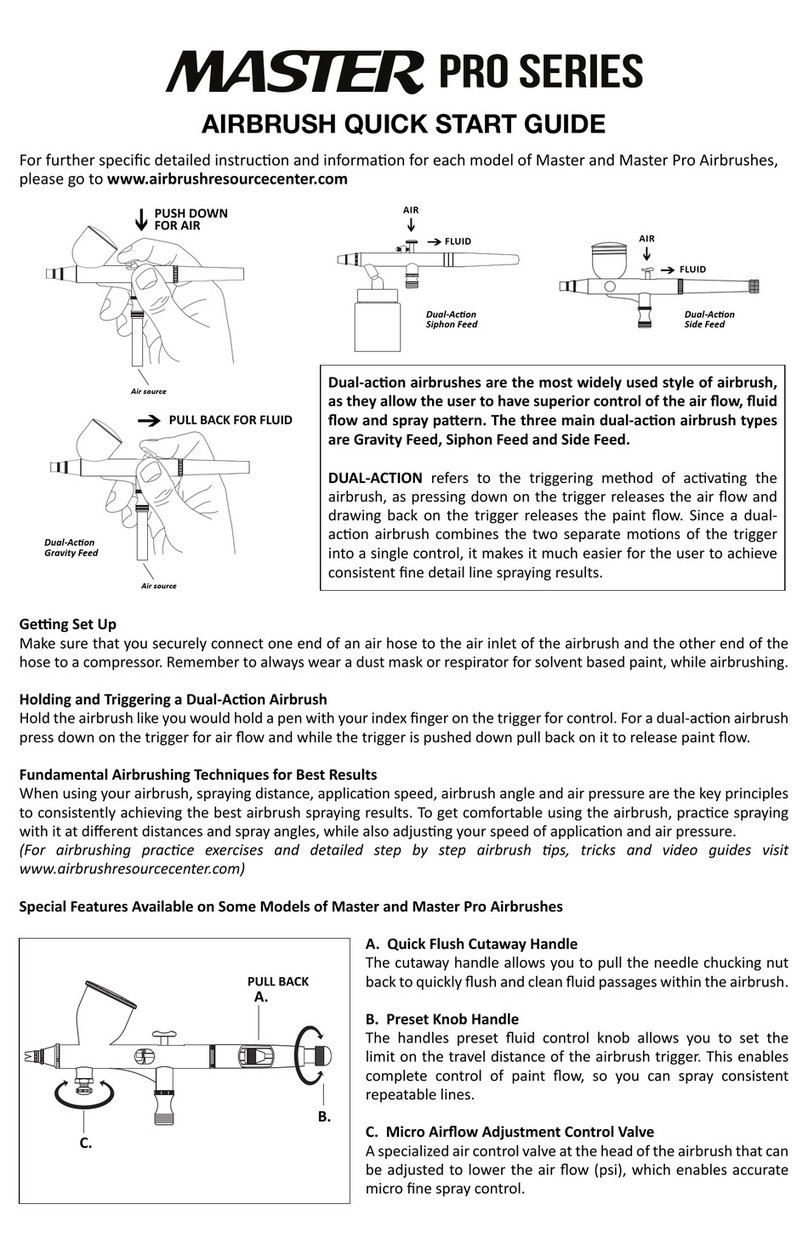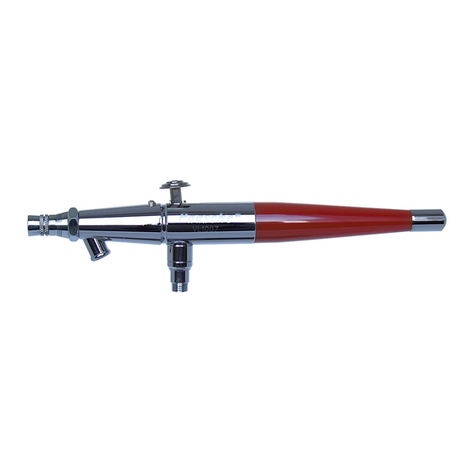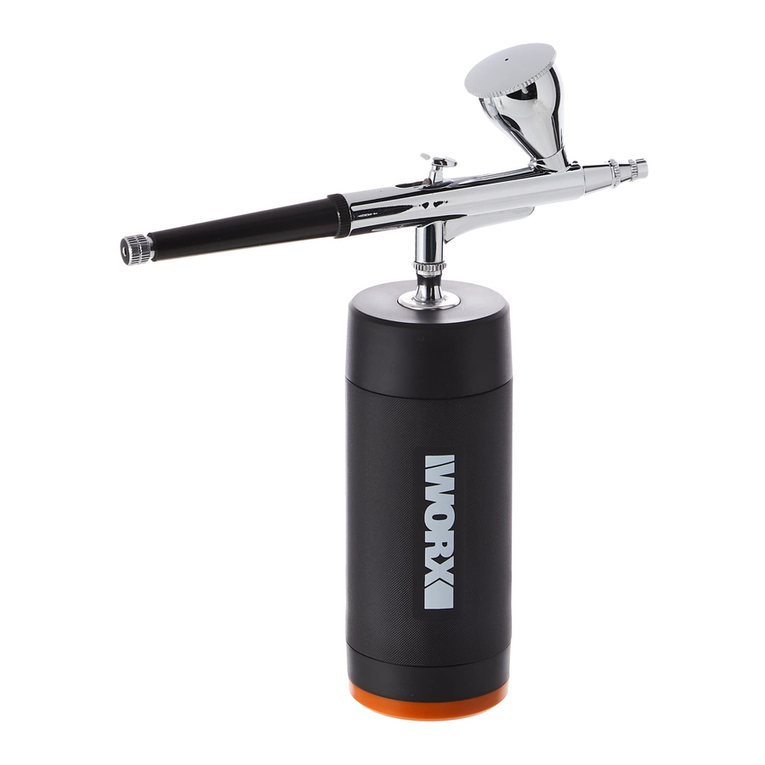
NOTICE
Clean the Airbrush IMMEDIATELY after use.
Delayed or inadequate cleaning will permanently clog the Airbrush.
Page 3For technical questions, please call 1-888-866-5797.Item 59292
SAFETYOPERATIONMAINTENANCE INSTALLATION
b. Do not expose compressor to rain or wet
conditions. Water entering a compressor
will increase the risk of electric shock.
c. Do not abuse the cord. Never use the
cord for unplugging the compressor.
Keep cord away from heat, oil, sharp edges
or moving parts. Damaged or entangled
cords increase the risk of electric shock.
3. Personal safety
a. Stay alert, watch what you are doing and
use common sense when operating this
compressor. Do not use this compressor
while you are tired or under the influence
of drugs, alcohol or medication. A moment
of inattention while operating a compressor
may result in serious personal injury.
b. Use safety equipment.
Wear protective paint spraying
gloves and a NIOSH‑approved
respirator during use.
c. Always wear eye protection.
Wear ANSI‑approved
safety goggles.
d. Prevent unintentional starting. Ensure the
switch is in the off-position before connecting
to power source or moving the compressor.
4. Compressor use and care
a. To reduce the risk of electric shock, do
not expose to rain. Store indoors.
b. Do not use the compressor if the switch
does not turn it on and off. Any compressor
that cannot be controlled with the switch
is dangerous and must be repaired.
c. Disconnect the plug from the power source
before making any adjustments, changing
accessories, or storing the compressor.
Such preventive safety measures reduce the
risk of starting the compressor accidentally.
d. Store an idle compressor out of the reach
of children and do not allow persons
unfamiliar with the compressor or these
instructions to operate it. A compressor is
dangerous in the hands of untrained users.
e. Maintain the compressor. Keep the
compressor clean for better and safer
performance. Follow instructions for
lubricating and changing accessories.
Keep dry, clean and free from oil and grease.
Check for misalignment or binding of moving
parts, breakage of parts and any other
condition that may affect the compressor’s
operation. If damaged, have the compressor
repaired before use. Many accidents are
caused by a poorly maintained compressor.
f. Use the compressor in accordance with
these instructions, taking into account
the working conditions and the work to
be performed. Use of the compressor for
operations different from those intended
could result in a hazardous situation.
5. Service
a. Have your compressor serviced by a
qualified repair person using only identical
replacement parts. This will ensure that the
safety of the compressor is maintained.
Specific Safety Warnings
1. Risk of fire or explosion - do not spray
flammable liquid in a confined area or towards a
hot surface. Spray area must be well-ventilated.
Do not smoke while spraying or spray where
spark or flame is present. Arcing parts - keep
compressor at least 20 feet away from explosive
vapors, such as when spraying with a spray gun.
2. Risk of bursting - do not adjust regulator higher
than marked maximum pressure of attachment.
3. Risk of injury - do not direct air
stream at people or animals.
4. Do not use to supply breathing air.
5. Do not spray near open flames, pilot lights,
stoves, heaters, the air compressor, or any
other heat source. Most solvents and coatings
are highly flammable, particularly when
sprayed. Maintain a distance of at least 25 feet
from the air compressor. If possible, locate
the air compressor in a separate room.
